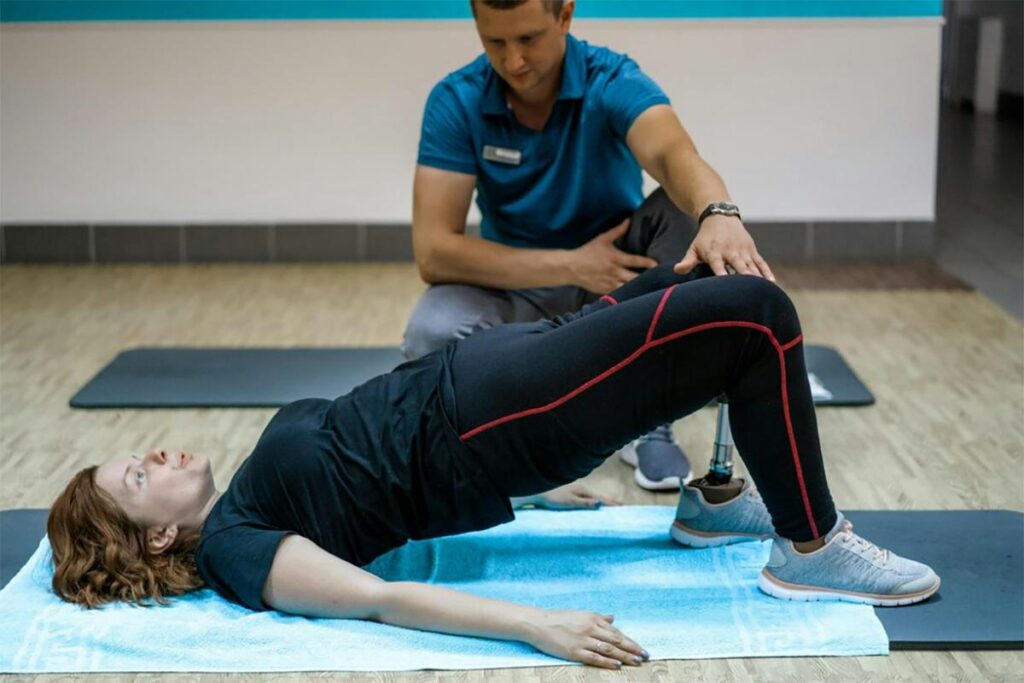Introduction
Hip flexor pain is a common complaint among athletes, impacting performance and daily activities. As a Doctor of Physical Therapy, I aim to provide an insightful guide on preventing and treating hip flexor pain, ensuring athletes can continue to perform at their best. Let’s delve into the causes, prevention strategies, and effective treatments for hip flexor pain.
Understanding Hip Flexor Pain
Causes in Athletes: Hip flexor pain arises from strain or injury to the hip flexor muscles, responsible for lifting the knee towards the torso. Common causes include overuse, insufficient warm-up, or direct trauma. Athletes participating in sports requiring sudden starts, stops, or turns are particularly at risk.
Symptoms: Symptoms may include pain in the front of the hip or groin, stiffness after periods of inactivity, and difficulty in performing activities that involve lifting the knee.
Prevention Tips
- Proper Warm-Up: Begin every workout or sports activity with a thorough warm-up, focusing on dynamic stretches to increase blood flow to the hip flexors.
- Strength Training: Incorporate exercises that strengthen the hip flexors and the surrounding muscles, including the abdomen and lower back, to improve stability and reduce the risk of injuries.
- Flexibility Exercises: Regularly practicing flexibility exercises can prevent the tightness that often contributes to hip flexor pain.
- Gradual Intensity Increase: Avoid sudden increases in workout intensity or duration. Gradually build up to new activities to give your body time to adjust.
Effective Treatment Options
- Rest and Ice: Initial treatment should include rest and ice to reduce inflammation and pain. Avoid activities that exacerbate the pain during the initial recovery phase.
- Physical Therapy: A physical therapist can design a personalized treatment plan that includes specific exercises to strengthen and stretch the hip flexors and improve overall hip mobility.
- Manual Therapy: Techniques such as massage and mobilization can help alleviate pain and increase range of motion.
- Modalities: Dry needling may be used in some cases to promote healing and reduce inflammation.
Advanced Strategies for Recovery

- Prehab care: strengthening and stretching appropriate muscles can help treat the root cause of the hip flexor pain and prevent it from ever coming back
- Sports-Specific Training: Incorporating sports-specific exercises can help ensure the hip flexors are prepared for the demands of your particular sport.
- Gait Analysis: For runners, a professional gait analysis can identify biomechanical issues contributing to hip flexor pain, allowing for targeted corrective measures.
Recognizing When to Seek Professional Help
It’s essential to consult a healthcare professional if pain persists despite rest and self-care, if there’s a significant loss of function, or if the pain was caused by a traumatic event. Early intervention can prevent further injury and expedite the return to full activity.
Conclusion
Hip flexor pain need not sideline athletes from the sports they love. With proper prevention strategies, effective treatment, and the guidance of healthcare professionals, athletes can overcome hip flexor pain and return to their peak performance levels. Remember, listening to your body and addressing issues early can keep you in the game and performing at your best.
References and Further Reading
For those seeking more in-depth information, numerous resources are available on hip flexor anatomy, injury prevention, and rehabilitation exercises. Consulting scientific journals, reputable sports medicine websites, and professional healthcare providers can offer valuable insights and guidance.

